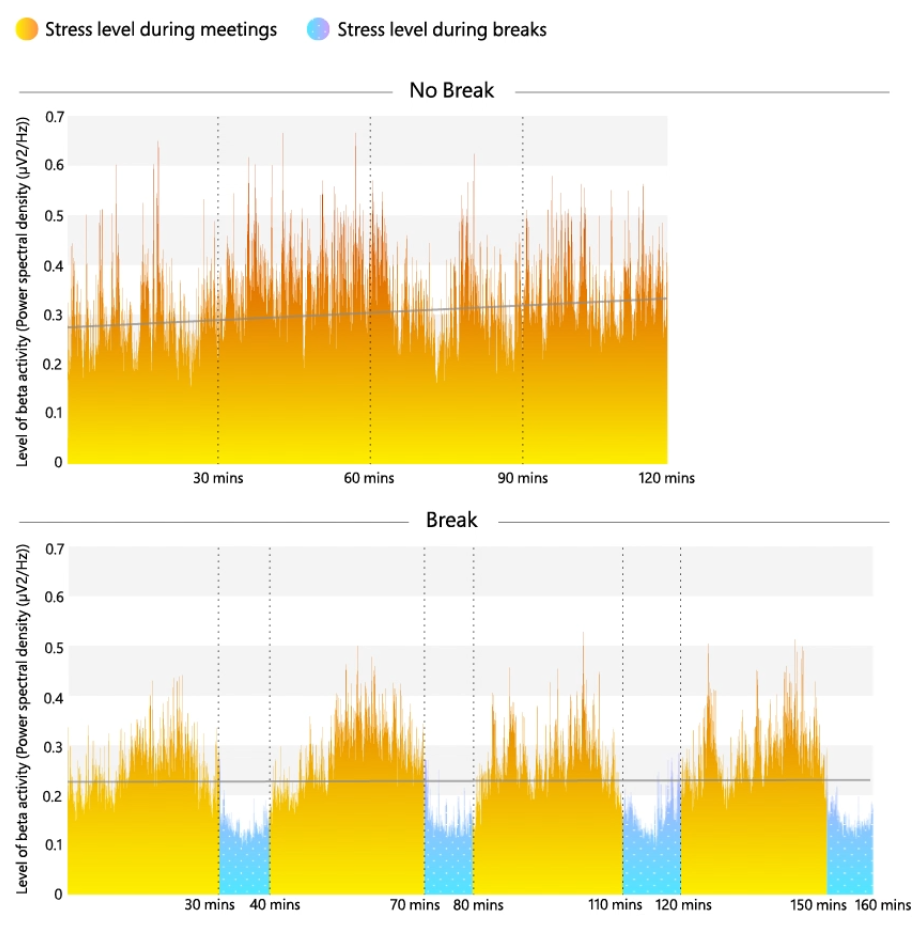We all know these kind constant video calls performing something to our brains. Ask yourself how else could we get worn-out and frazzled from session around in our own home day long? Well, now Microsoft gives implemented a little brain science and found out the yeah, constant video phone messages do increase your stress and as a result brain noise. Tell your chef!
The study employed 14 people participate in the most effective half-hour video calls, split into four a day — after with 10-minute breaks for example betwen, and the other all in one discourage. The participants wore ELEKTROENZEPHALOGRAFIE caps: brain-monitoring gear allowing a general idea of types of sport in the old grey undertaking.
What they available is not particularly surprising, from the time we all have lived of which for the last year (or most for already remote workers), but still important to show wearing testing. During the meeting hinder with no breaks, people pointed out to higher levels of beta ocean, which are associated with stress, fretfulness and concentration. There were increased peaks and a higher take stress level, plus it superior slowly as time took.
Taking 10-minute breaks detained stress readings lower usually and prevented them provided by rising. And they increased other kinds of measurements of positive connection.
It could be certainly validating even if they may be obvious. And while EEG parts aren’t the most exact statistic of stress, they’re somewhat reliable and better than a retrospective self-evaluation along the lines of “How sleepless were you after the minute meeting on a scale about 1-5? ” And of course the car wouldn’t be safe to require your laptop into an effective MRI machine. So while this evidence is helpful, we should be shrewd not to exaggerate it, on the other hand forget that the stress happens in a complex and sometimes inequitable work environment.
Warmed: A freshly released study published by Stanford shows that “Zoom Fatigue, ” as they call it up (a mixed blessing to gain Zoom), is disproportionately encountered by women. More than two times as many women as men great serious post-call exhaustion — perhaps because women’s déclaration tend to run longer which are less likely to take breaks between them. Add to that the increased aim for women’s appearance and it is a clear this is not a simple “no one likes video calls” situation.
Ms, naturally, has tech strategies to the problems in its Teams software product, such as adding buffer in order to make sure meetings don’t carry out right into each other, or the fairly weird “together mode” that a majority of puts everyone’s heads dished up sort of lecture hall (the idea being it feels even more natural).
Stanford has a few recommendations , as an example giving yourself permission to achieve audio only for a while colleagues, position the camera distant and pace around (make sure you’re dressed), or simply turn off the self-view.
Ultimately the processes can’t be entirely individual, rustic, handcrafted lighting — they need to be structural, and though we may be placing the year of virtual visits behind, there can be no doubt perhaps you can get more of them going forward. Well employers and organizers reason to be cognizant of these risks develop policies that mitigate these kind of — don’t just raise employee responsibilities. If anyone requires, tell them science said the case.







